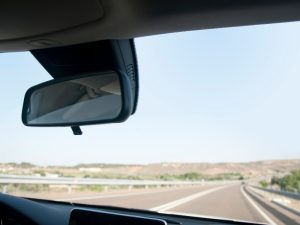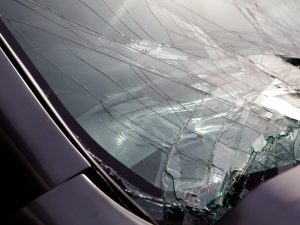What Should You Check After Replacing a Nissan Windscreen?

Replacing a Nissan windscreen is a significant task, particularly when it comes to ensuring the safety and performance of your vehicle. After replacing your Nissan windscreen, it’s essential to carry out a few checks to guarantee everything is installed correctly and will function as expected. This article will walk you through the key things to check after your Nissan windscreen replacement.
Why is it important to inspect the new windscreen?
After replacing a Nissan windscreen, it’s essential to perform a quick inspection to ensure everything is in order. This helps you confirm the installation’s quality and ensures that the new glass performs as expected.
- Visual check: Look for any visible cracks, chips, or imperfections on the glass.
- Sealing quality: Check the edges of the windscreen for gaps or uneven seals.
- Windshield wipers: Ensure the wipers are functioning correctly and aren’t obstructed.
- Clear view: Ensure no distortions in the glass could affect your vision while driving.
- No rattling: Listen for unusual sounds that may indicate an improper fit.
After checking these points, you’ll gain peace of mind knowing that your new windscreen is installed correctly and safely.
How do you know if your Nissan windscreen is installed correctly?
A correctly installed windscreen is essential for the glass’s safety and longevity. To confirm that everything is installed properly, check the following:
- Proper alignment: The windscreen should be perfectly aligned with the vehicle’s frame, with no noticeable gaps or misalignments.
- Strong adhesion: Ensure that the adhesive used is strong and that there are no air bubbles or gaps around the edges of the glass.
- Even fitting: The glass should fit evenly around the frame, with no visible unevenness.
- Secure placement: Gently tap around the windscreen’s edges to ensure it is securely fixed and won’t shift or loosen.
- No interference with other components: Check that the windscreen is not obstructing sensors, cameras, or other vehicle features.
Checking these elements confirms that the replacement was done correctly, ensuring your safety and comfort.
Why is it important to allow the windscreen to set before driving?
Giving the adhesive time to set and cure before driving is important, as driving immediately after a windscreen replacement is not safe. This ensures the windscreen is securely attached and won’t shift while you’re on the road.
- Curing time: Allow an hour before driving to give the adhesive enough time to bond correctly.
- Avoid pressure: Refrain from applying pressure on the glass during this time, as it could cause misalignment.
- No rough conditions: Avoid harsh weather, such as heavy rain or extreme heat, during curing.
- Safe driving: Driving too soon can compromise the windscreen’s integrity, making it more susceptible to damage or detachment.

- Check adhesive instructions: Always follow the manufacturer’s recommended curing time.
Waiting for the adhesive to set is essential for ensuring your windscreen stays securely in place while driving.
What are the common signs of a faulty windscreen replacement?
Even if your new windscreen looks fine, certain signs may indicate it was not installed correctly. If you notice any of the following, you must address them immediately.
Sign | Description | Cause |
Wind noise | Unusual wind noise while driving. | Poor seal or incorrect fitting. |
Water leaks | Leaks around the edges after rain. | Faulty installation. |
Visible gaps | Gaps between glass and frame. | Incorrect fitting. |
Loose windscreen | Windscreen shifts or rattles. | Adhesive not set properly. |
Cracking or chipping | New cracks or chips after installation. | Installation issues. |
If you spot any of these issues, it’s best to contact your technician as soon as possible to rectify the problem and avoid the risks of fitting a windscreen incorrectly.
Can replacing a Nissan windscreen affect other car components?
Replacing a Nissan windscreen is a delicate process and can sometimes affect other vehicle components. While rare, here are a few things to watch out for:
- Airbag deployment: The windscreen helps support the deployment of airbags in certain accidents. Incorrect installation could affect their effectiveness.
- Damage to surrounding trim: The surrounding trim or moulding could get damaged during the replacement process.
- Alignment issues: The vehicle’s structural integrity might be affected if the windscreen is not fitted correctly.
- Sensor misalignment: Many modern vehicles have sensors, such as rain sensors or lane assist systems, and advanced driver-assistance systems (ADAS) embedded in the windscreen. Incorrect installation could misalign these systems and cause malfunctions.
If you notice any irregularities in operating your vehicle’s systems after the windscreen replacement, be sure to address them promptly. Have it checked by an expert.
What are the risks of driving with an improperly installed windscreen?
Driving with an improperly installed windscreen can pose serious risks. It’s important to ensure everything is set up correctly to avoid potential hazards.
- Visibility issues: A poorly installed windscreen can distort your view, making driving harder.
- Structural integrity: The windscreen contributes to your vehicle’s structural integrity. An improperly installed windscreen could compromise the overall strength of your car.

- Passenger safety: If the glass shatters or detaches in an accident, a faulty windscreen can lead to further injury.
- Increased damage risk: A loose or poorly fitted windscreen is more susceptible to damage, especially when driving at high speeds.
- Legal consequences: An improperly installed windscreen might not meet local safety regulations, leading to potential fines or penalties.
Ensure that the installer properly installs and secures your new windscreen before driving your Nissan to avoid potential risks.
How can you ensure the windscreen stays in good condition?
Once you install your Nissan’s windscreen correctly, it’s essential to keep it in good condition.Here are some tips to help maintain its longevity:
- Regular cleaning: Keep the windscreen clean to ensure clear visibility. Use a non-abrasive cleaner and avoid harsh chemicals that could damage the glass.
- Check wipers: Ensure your wipers are functioning properly to avoid scratching the glass when cleaning.
- Avoid excessive pressure: Don’t lean or rest objects on the windscreen, as this can damage it.
- Check for cracks: Regularly inspect the windscreen for chips or cracks that could worsen over time.
- Protect from extreme temperatures: Avoid exposing the windscreen to sudden temperature changes, which can cause the glass to crack.
With these maintenance tips, you can ensure your Nissan’s windscreen remains in excellent condition for years.
Conclusion
Ensuring that your Nissan windscreen replacement is correctly installed by a professional windscreen replacer and properly maintained is essential for your safety and the overall functionality of your vehicle. Regularly inspecting your windscreen, allowing it to set, and being mindful of potential issues can avoid unnecessary risks and keep your car in top condition.
